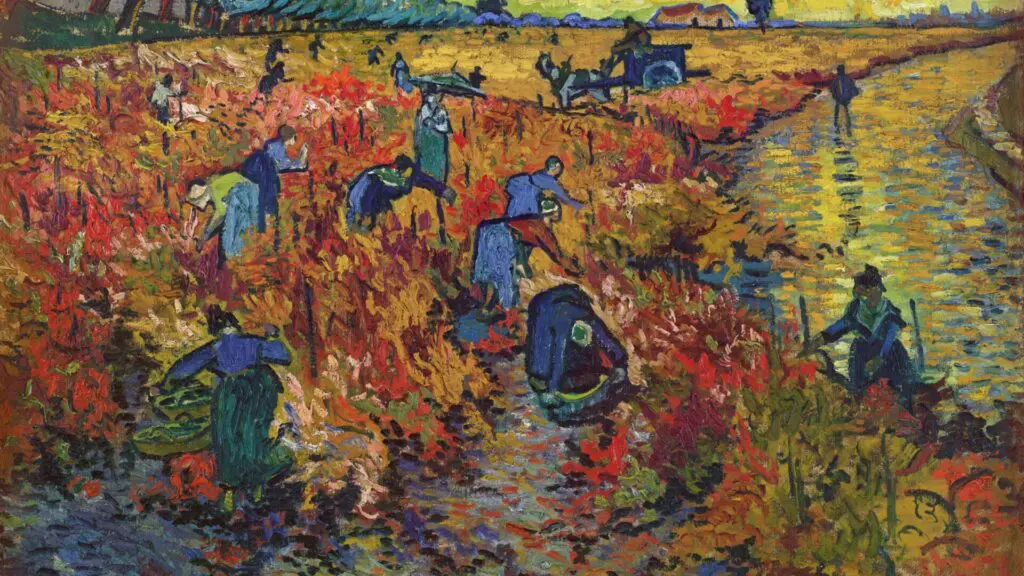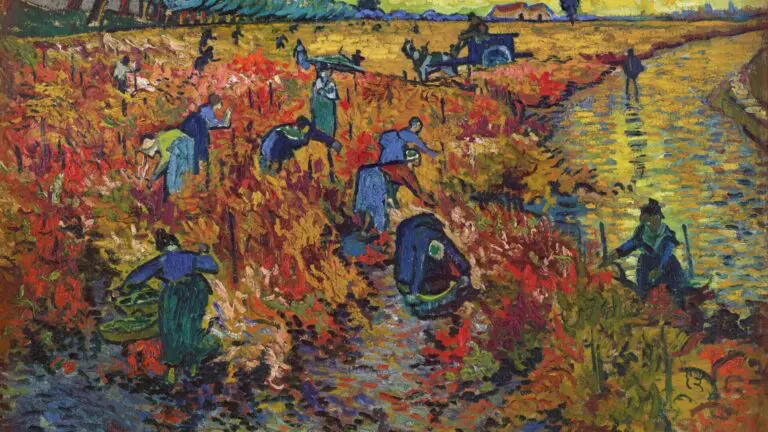The Red Vineyard
The Red Vineyard is an oil painting depicting laborers working in a sunlit vineyard with vivid, warm colors of reds, yellows, and golds. The scene captures the vineyard in harvest season, glowing in the afternoon light as workers harvest grapes in a landscape awash with color. It holds a unique place in Van Gogh's legacy as it's his only documented sale.
1888
About the Artwork
In 1888, Vincent Van Gogh arrived in Arles, France, filled with hope of building an artist community he called the “Studio of the South.” Inspired by the vivid landscapes and colors of Provence, he painted prolifically, capturing the beauty of rural life. The Red Vineyard, painted during this time, was one of his rare works showing the local vineyard workers toiling under a blazing sunset. However, what makes this painting unique is its significance in Van Gogh’s life.
Did You Know
Although Van Gogh created hundreds of works, sales eluded him while he was alive. This painting holds a unique place in Van Gogh’s legacy as his only documented sale, marking it as a significant historical piece.
Unlike many of Van Gogh’s other landscapes that focus solely on nature, The Red Vineyard includes figures working in the fields. This choice reflects his deep respect for the working class and rural life, which he saw as noble and meaningful. Van Gogh often painted farmers, fieldworkers, and harvest scenes as a tribute to their hard work and connection to nature.
Van Gogh’s lack of commercial success contributed to his financial struggles and feelings of isolation, even as he continued to paint passionately. The Red Vineyard was exhibited in Brussels at the Les XX exhibition in 1890, alongside other works by Van Gogh, which helped gain him a small circle of admirers. The painting was purchased for 400 francs by the Belgian artist Anna Boch, a member of the avant-garde art circle Les XX.










